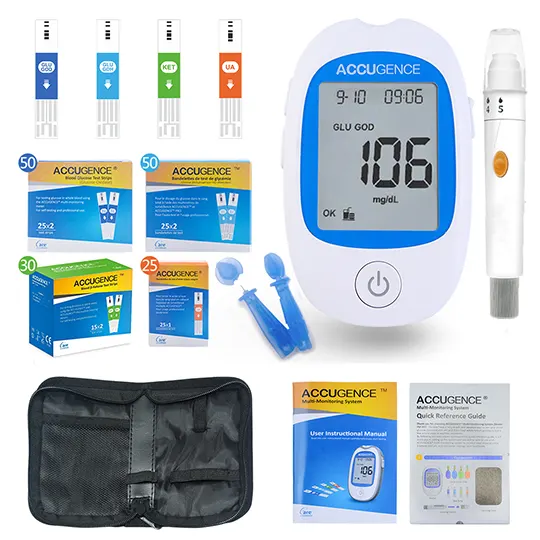Erythromycin Lactobionate 1g Powder for Solution for Infusion
Active ingredient: erythromycin lactobionate
- 1. Name of the medicinal product
- 2. Qualitative and quantitative composition
- 3. Pharmaceutical form
- 4. Clinical particulars
- 4.1 Therapeutic indications
- 4.2 Posology and method of administration
- 4.3 Contraindications
- 4.4 Special warnings and precautions for use
- 4.5 Interaction with other medicinal products and other forms of interaction
- 4.6 Pregnancy and lactation
- 4.7 Effects on ability to drive and use machines
- 4.8 Undesirable effects
- 4.9 Overdose
- 5. Pharmacological properties
- 5.1 Pharmacodynamic properties
- 5.2 Pharmacokinetic properties
- 5.3 Preclinical safety data
- 6. Pharmaceutical particulars
- 6.1 List of excipients
- 6.2 Incompatibilities
- 6.3 Shelf life
- 6.4 Special precautions for storage
- 6.5 Nature and contents of container
- 6.6 Special precautions for disposal and other handling
- 7. Marketing authorisation holder
- 8. Marketing authorisation number(s)
- 9. Date of first authorisation/renewal of the authorisation
- 10. Date of revision of the text
1. Name of the medicinal product
Erythrocin I.V. Lactobionate 1g Powder for Solution for Infusion
Erythromycin Lactobionate 1g Powder for Solution for Infusion
2. Qualitative and quantitative composition
Active: Erythromycin as Erythromycin lactobionate 1 g / vial
3. Pharmaceutical form
Powder for solution for infusion
4. Clinical particulars
4.1 Therapeutic indications
This medicine is indicated in severe and immunocompromised cases of infections caused by sensitive organisms where high blood levels are required at the earliest opportunity or when the oral route is compromised.
1. Upper Respiratory Tract infections: tonsillitis, peritonsillar abscess, pharyngitis, laryngitis, sinusitis, secondary infections in influenza and common colds
2. Lower Respiratory Tract infections: tracheitis, acute and chronic bronchitis, pneumonia (lobar pneumonia, bronchopneumonia, primary atypical pneumonia), bronchiectasis, Legionnaire's disease
3. Ear infection: otitis media and otitis externa, mastoiditis
4. Oral infections: gingivitis, Vincent's angina
5. Eye infections: blepharitis
6. Skin and soft tissue infections: boils and carbuncles, paronychia, abscesses, pustular acne, impetigo, cellulitis, erysipelas
7. Gastrointestinal infections: cholecystitis, staphylococcal enterocolitis
8. Prophylaxis: peri-operative secondary infection prophylaxis, severe trauma and burns secondary infection prophylaxis, endocarditis prophylaxis (dental procedures)
9. Septicaemia
10. Endocarditis
11. Other infections: osteomyelitis, urethritis, gonorrhoea, syphilis, lymphogranuloma venereum, diphtheria, prostatitis, scarlet fever.
4.2 Posology and method of administration
Adults: severe and immunocompromised infections, 50mg/kg/day, preferably by continuous infusion (equivalent to 4g per day for adults).
Mild to moderate infections (oral route compromised) 25mg/kg/day.
Newborn infant (birth to 1 month): 10-15mg/kg 3 times daily.
Children: 12.5mg/kg 4 times daily. Doses can be doubled in severe infections.
Elderly: No special dosage recommendations.
Recommended Administration
Bolus injection (IV) push) is contraindicated
Continuous infusion of this medicine is preferred due to the slower infusion rate and lower concentration of erythromycin; however, intermittent infusion at intervals not greater than every six hours is also effective.
Intravenous erythromycin should be replaced by oral erythromycin as soon as possible.
Preparations for administration:
For Intermittent Infusion of 1 gram dose:
Step 1 - add 20 ml of Water for Injections BP to the 1 g vial.
Step 2 - add 20 ml of Step 1 solution to 200-250 ml of Sodium Chloride Intravenous Infusion BP (0.9% Saline). This provides a 0.5%-0.4% solution.
If it is decided to administer the daily dose as an intermittent infusion, then the erythromycin concentration should not exceed 5 mg/ml and the time of each infusion should be between 20 and 60 minutes.
For Continuous Infusion of 1 gram dose:
Step 1 - add 20 ml of Water for Injections BP to the 1 g vial.
Step 2 - add 20 ml of Step 1 solution to 500-1000 ml of Sodium Chloride Intravenous Infusion BP (0.9% Saline). This provides a 0.2%-0.1% infusion
The infusion should be completed within eight hours of preparation to ensure potency.
Alternative Step 2 diluents:
Compound Sodium Lactate Injection BP (Hartmann's Solution).
Solutions containing glucose may also be used but sodium bicarbonate must first be added as a buffer to ensure neutrality.
5ml of sterile 8.4% w/v sodium bicarbonate solution will neutralise one litre of: Glucose Injection BP (5%), or of Sodium Chloride and Glucose Injection BP (usually 0.18% sodium chloride and 4.0% glucose).
The stability of solutions of this medicine is adversely affected below pH 5.5.
For further details please see section 6.6.
4.3 Contraindications
Known hypersensitivity to erythromycin.
Erythromycin is contraindicated in patients taking simvastatin, tolterodine, mizolastine, amisulpride, astemizole, terfenadine, domperidone, cisapride or pimozide.
Erythromycin is contraindicated with ergotamine and dihydroergotamine.
Bolus injection ( IV push) is an unacceptable route of administration.
This medicine must be administered by continuous or intermittent intravenous infusion only.
4.4 Special warnings and precautions for use
Prolonged QTc interval and ventricular arrhythmias have been reported rarely in patients receiving intravenous erythromycin.
Benzyl alcohol may be added as a preservative. Benzyl alcohol has been reported to be associated with a fatal 'Gasping Syndrome' in premature infants.
Erythromycin is excreted principally by the liver, so caution should be exercised in administering the antibiotic to patients with impaired hepatic function or concomitantly receiving potentially hepatotoxic agents. Hepatic dysfunction including increased liver enzymes and/or cholestatic hepatitis, with or without jaundice, has been infrequently reported with erythromycin.
Pseudomembranous colitis has been reported with nearly all antibacterial agents, including macrolides, and may range in severity from mild to life-threatening (see section.4.8). Clostridium difficile-associated diarrhoea (CDAD) has been reported with use of nearly all antibacterial agents including erythromycin, and may range in severity from mild diarrhoea to fatal colitis. Treatment with antibacterial agents alters the normal flora of the colon, which may lead to overgrowth of C. difficile. CDAD must be considered in all patients who present with diarrhoea following antibiotic use. Careful medical history is necessary since CDAD has been reported to occur over two months after the administration of antibacterial agents.
As with other macrolides, rare serious allergic reactions, including acute generalised exanthematous pustulosis (AGEP) have been reported. If an allergic reaction occurs, the drug should be discontinued and appropriate therapy should be instituted. Physicians should be aware that reappearance of the allergic symptoms may occur when symptomatic therapy is discontinued.
Patients receiving erythromycin concurrently with drugs which can cause prolongation of the QT interval should be carefully monitored. The concomitant use of erythromycin with some of these drugs is contraindicated (See sections 4.3 & 4.5)
There have been reports suggesting erythromycin does not reach the foetus in adequate concentrations to prevent congenital syphilis. Infants born to women treated during pregnancy with oral erythromycin for early syphilis should be treated with an appropriate penicillin regimen.
There have been reports that erythromycin may aggravate the weakness of patients with myasthenia gravis.
Erythromycin interferes with the fluorometric determination of urinary catecholamines.
Rhabdomyolysis with or without renal impairment has been reported in seriously ill patients receiving erythromycin concomitantly with statins.
There have been reports of infantile hypertrophic pyloric stenosis (IHPS) occurring in infants following erythromycin therapy. In one cohort of 157 newborns who were given erythromycin for pertussis prophylaxis, seven neonates (5%) developed symptoms of non-bilious vomiting or irritability with feeding and were subsequently diagnosed as having IHPS requiring surgical pyloromyotomy. Since erythromycin may be used in the treatment of conditions in infants which are associated with significant mortality or morbidity (such as pertussis or chlamydia), the benefit of erythromycin therapy needs to be weighed against the potential risk of developing IHPS. Parents should be informed to contact their physician if vomiting or irritability with feeding occurs.
4.5 Interaction with other medicinal products and other forms of interaction
Increases in serum concentrations of the following drugs metabolised by the cytochrome P450 system may occur : when administered concurrently with erythromycin: acenocoumarol, alfentanil, astemizole, bromocriptine, carbamazepine, cilostazol, cyclosporin, digoxin, dihydroergotamine, disopyramide, ergotamine, hexobarbitone, methylprednisolone, midazolam, omeprazole, phenytoin, quinidine, rifabutin, sildenafil, tacrolimus, terfenadine, domperidone, theophylline, triazolam, valproate, vinblastine, and antifungals e.g. fluconazole, ketoconazole and itraconazole. Appropriate monitoring should be undertaken and dosage should be adjusted as necessary. Particular care should be taken with medications known to prolong the QTc interval of the electrocardiogram.
Drugs that induce CYP3A4 (such as rifampicin, phenytoin, carbamazepine, phenobarbital, St John's Wort) may induce the metabolism of erythromycin. This may lead to sub-therapeutic levels of erythromycin and a decreased effect. The induction decreases gradually during two weeks after discontinued treatment with CYP3A4 inducers. Erythromycin should not be used during and two weeks after treatment with CYP3A4 inducers.
HMG-CoA Reductase Inhibitors: erythromycin has been reported to increase concentrations of HMG-CoA reductase inhibitors (e.g. lovastatin and simvastatin). Rare reports of rhabdomyolysis have been reported in patients taking these drugs concomitantly.
Contraceptives: some antibiotics may in rare cases decrease the effect of contraceptive pills by interfering with the bacterial hydrolysis of steroid conjugates in the intestine and thereby reabsorption of unconjugated steroid. As a result of this plasma levels of active steroid may decrease.
Antihistamine H1 antagonists: care should be taken in the coadministration of erythromycin with H1 antagonists such as terfenadine, astemizole and mizolastine due to the alteration of their metabolism by erythromycin.
Erythromycin significantly alters the metabolism of terfenadine, astemizole and pimozide when taken concomitantly. Rare cases of serious, potentially fatal, cardiovascular events including cardiac arrest, torsade de pointes and other ventricular arrhythmias have been observed (see sections 4.3 and 4.8).
Anti-bacterial agents: an in vitro antagonism exists between erythromycin and the bactericidal beta-lactam antibiotics (e.g. penicillin, cephalosporin). Erythromycin antagonises the action of clindamycin, lincomycin and chloramphenicol. The same applies for streptomycin, tetracyclines and colistin.
Protease inhibitors: in concomitant administration of erythromycin and protease inhibitors, an inhibition of the decomposition of erythromycin has been observed.
Oral anticoagulants: there have been reports of increased anticoagulant effects when erythromycin and oral anticoagulants (e.g. warfarin) are used concomitantly.
Triazolobenzodiazepines (such as triazolam and alprazolam) and related benzodiazepines: erythromycin has been reported to decrease the clearance of triazolam, midazolam, and related benzodiazepines, and thus may increase the pharmacological effect of these benzodiazepines.
Post-marketing reports indicate that co-administration of erythromycin with ergotamine or dihydroergotamine has been associated with acute ergot toxicity characterised by vasospasm and ischaemia of the central nervous system, extremities and other tissues (see section 4.3).
Elevated cisapride levels have been reported in patients receiving erythromycin and cisapride concomitantly. This may result in QTc prolongation and cardiac arrhythmias including ventricular tachycardia, ventricular fibrillation and torsades de pointes. Similar effects have been observed with concomitant administration of pimozide and clarithromycin, another macrolide antibiotic.
Erythromycin use in patients who are receiving high doses of theophylline may be associated with an increase in serum theophylline levels and potential theophylline toxicity. In case of theophylline toxicity and/or elevated serum theophylline levels, the dose of theophylline should be reduced while the patient is receiving concomitant erythromycin therapy. There have been published reports suggesting when oral erythromycin is given concurrently with theophylline there is a significant decrease in erythromycin serum concentrations. This decrease could result in sub-therapeutic concentrations of erythromycin.
There have been post-marketing reports of colchicine toxicity with concomitant use of erythromycin and colchicine.
Hypotension, bradyarrhythmias and lactic acidosis have been observed in patients receiving concurrent verapamil, a calcium channel blocker.
Cimetidine may inhibit the metabolism of erythromycin which may lead to an increased plasma concentration.
Erythromycin has been reported to decrease the clearance of zopiclone and thus may increase the pharmacodynamic effects of this drug.
4.6 Pregnancy and lactation
There are no adequate and well-controlled studies in pregnant women. However, observational studies in humans have reported cardiovascular malformations after exposure to medicinal products containing erythromycin during early pregnancy.
Erythromycin has been reported to cross the placental barrier in humans, but foetal plasma levels are generally low.
There have been reports that maternal macrolide antibiotics exposure within 7 weeks of delivery may be associated with a higher risk of infantile hypertrophic pyloric stenosis (IHPS).
Erythromycin can be excreted into breast-milk. Caution should be exercised when administering erythromycin to lactating mothers due reports of infantile hypertrophic pyloric stenosis in breast-fed infants.
4.7 Effects on ability to drive and use machines
None reported.
4.8 Undesirable effects
Blood and lymphatic system disorders:
Eosinophilia.
Cardiac disorders:
QTc interval prolongation, torsades de pointes, palpitations, and cardiac rhythm disorders including ventricular tachyarrhythmias.
Ear and labyrinth disorders:
Deafness, tinnitus There have been isolated reports of reversible hearing loss occurring chiefly in patients with renal insufficiency or taking high doses.
Gastrointestinal disorders:
The most frequent side effects of oral erythromycin preparations are gastrointestinal and are dose-related. The following have been reported: upper abdominal discomfort, nausea, vomiting, diarrhoea, pancreatitis, anorexia, infantile hypertrophic pyloric stenosis.
Pseudomembranous colitis has been reported rarely in association with erythromycin therapy (see section 4.4).
General disorders and administration site conditions:
Chest pain, fever, malaise.
Hepatobiliary disorders:
Cholestatic hepatitis, jaundice, hepatic dysfunction, hepatomegaly, hepatic failure, hepatocellular hepatitis (see section 4.4).
Immune system disorders:
Allergic reactions ranging from urticaria and mild skin eruptions to anaphylaxis have occurred. Investigations Increased liver enzyme values.
Nervous system disorders:
There have been isolated reports of transient central nervous system side effects including confusion, seizures and vertigo; however, a cause and effect relationship has not been established.
Psychiatric disorders:
Hallucinations
Eye disorders
Mitochondrial Optic Neuropathy
Renal and urinary disorders
Interstitial nephritis
Skin and subcutaneous tissue disorders:
Skin eruptions, pruritus, urticaria, exanthema, angioedema, Stevens-Johnson syndrome, toxic epidermal necrolysis, erythema multiforme.
Not known: acute generalised exanthematous pustulosis (AGEP)
Vascular disorders:
Hypotension.
Reporting of suspected adverse reactions
Reporting suspected adverse reactions after authorisation of the medicinal product is important. It allows continued monitoring of the benefit/risk balance of the medicinal product. Healthcare professionals are asked to report any suspected adverse reactions via the Yellow Card Scheme at: www.mhra.gov.uk/yellowcard
4.9 Overdose
Symptoms: hearing loss, severe nausea, vomiting and diarrhoea.
Treatment: gastric lavage, general supportive measures.
5. Pharmacological properties
5.1 Pharmacodynamic properties
ATC code: J01FA01
Erythromycin exerts its antimicrobial action by binding to the 50S ribosomal sub-unit of susceptible microorganisms and suppresses protein synthesis. Erythromycin is usually active against most strains of the following organisms both in vitro and in clinical infections:
Gram positive bacteria - Listeria monocytogenes, Corynebacterium diphtheriae (as an adjunct to antitoxin), Staphylococci spp, Streptococci spp (including Enterococci).
Gram negative bacteria - Haemophilus influenzae, Neisseria meningitidis, Neisseria gonorrhoeae, Legionella pneumophila, Moraxella (Branhamella) catarrhalis, Bordetella pertussis, Campylobacter spp.
Mycoplasma - Mycoplasma pneumoniae, Ureaplasma urealyticum.
Other organisms - Treponema pallidum, Chlamydia spp, Clostridia spp, L-forms, the agents causing trachoma and lymphogranuloma venereum.
Note: The majority of strains of Haemophilus influenzae are susceptible to the concentrations reached after ordinary doses.
5.2 Pharmacokinetic properties
Following intravenous infusion, erythromycin is widely distributed throughout body tissues, including lung tissues.
5.3 Preclinical safety data
There are no pre-clinical data of relevance to the prescriber which are additional to that already included in other sections of the SPC.
6. Pharmaceutical particulars
6.1 List of excipients
None.
6.2 Incompatibilities
None Stated.
6.3 Shelf life
36 months unopened, use within 1 day of opening.
6.4 Special precautions for storage
Once reconstituted, store in a refrigerator between 2°C and 8°C and use within 24 hours.
6.5 Nature and contents of container
Glass vial with rubber closure.
Size of vial: 1g.
6.6 Special precautions for disposal and other handling
Continuous intravenous infusion with an erythromycin concentration of 1mg/ml (0.1% solution) is recommended. The infusion should be completed within 8 hours of preparation to ensure potency.
If required, solution strengths up to 5mg/ml (0.5% solution) may be used, but should not be exceeded. Higher concentrations may result in pain along the vein. Bolus injection is not recommended.
7. Marketing authorisation holder
Amdipharm UK Limited
Capital House, 85 King William Street,
London EC4N 7BL, UK
8. Marketing authorisation number
PL 20072/0038
9. Date of first authorisation/renewal of the authorisation
01/03/2001
10. Date of revision of the text
05/01/2020




